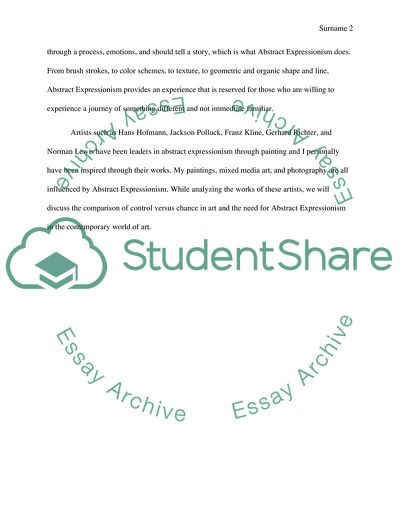Cite this document
(“Abstract Expressionism - Control VS Chance Research Paper”, n.d.)
Abstract Expressionism - Control VS Chance Research Paper. Retrieved from https://studentshare.org/visual-arts-film-studies/1637989-abstract-expressionism-control-vs-chance
Abstract Expressionism - Control VS Chance Research Paper. Retrieved from https://studentshare.org/visual-arts-film-studies/1637989-abstract-expressionism-control-vs-chance
(Abstract Expressionism - Control VS Chance Research Paper)
Abstract Expressionism - Control VS Chance Research Paper. https://studentshare.org/visual-arts-film-studies/1637989-abstract-expressionism-control-vs-chance.
Abstract Expressionism - Control VS Chance Research Paper. https://studentshare.org/visual-arts-film-studies/1637989-abstract-expressionism-control-vs-chance.
“Abstract Expressionism - Control VS Chance Research Paper”, n.d. https://studentshare.org/visual-arts-film-studies/1637989-abstract-expressionism-control-vs-chance.


